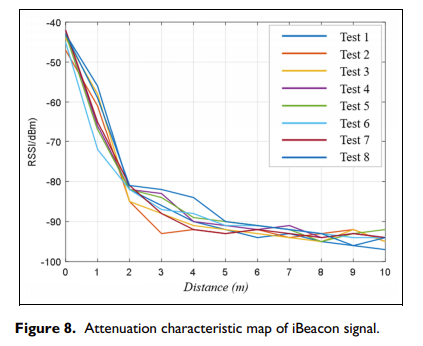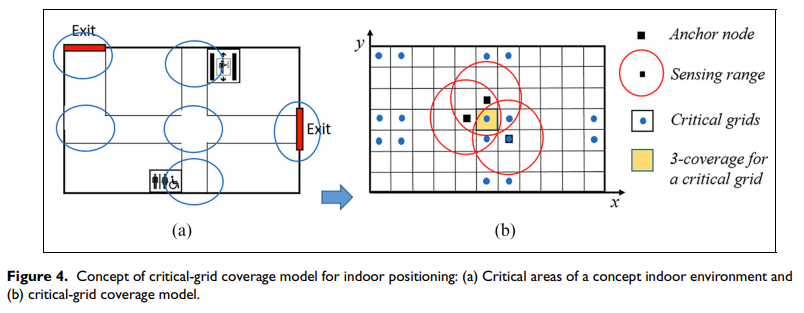There’s recent research into Sensor placement optimization for critical-grid coverage problem of indoor positioning (PDF). The paper investigates how to reduce deployment cost by placing more sensors in areas that require higher accuracy rather than using a uniform deployment scheme.
Areas are differentiated as either being ‘critical’ or ‘common’. For example, in a railway station, critical areas are elevator entrances, boarding gates, toilets and the service centre. Critical and common areas have different positioning needs leading to different sensor deployment densities.
The paper examines the variation of RSSI with distance and develops a critical-grid coverage model. A NSGA-II algorithm is used to optimise the placement of iBeacon nodes.


The results showed that the new placement scheme obtained a lower error and a greater reduction of sensor deployment cost than the uniform deployment scheme. The proposed method reduced the cost of sensor deployment while ensuring the accuracy of indoor positioning for critical areas.